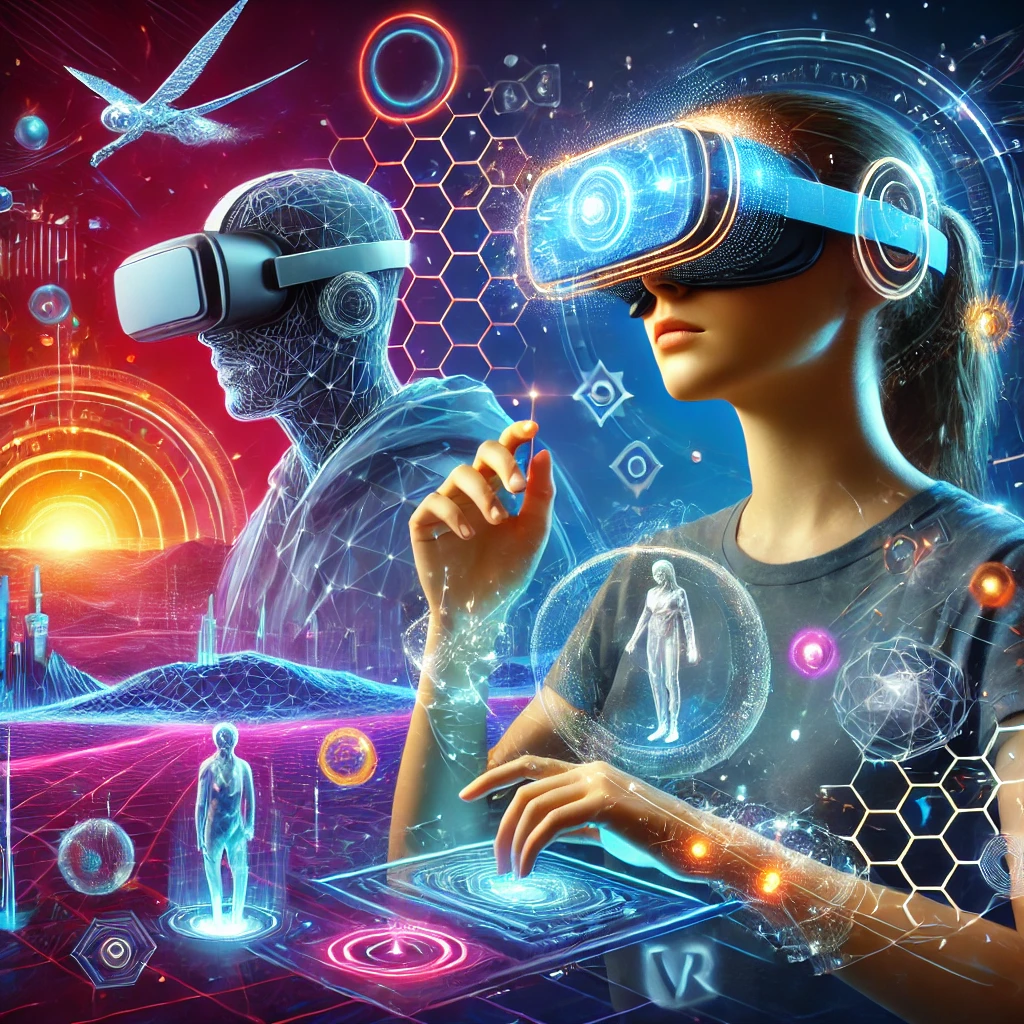Introduction to AR & VR
Augmented Reality (AR) and Virtual Reality (VR) are revolutionizing industries, from gaming and education to healthcare and business. AR overlays digital elements in the real world, while VR creates fully immersive experiences. These technologies are set to redefine how we interact with digital content.
Latest Trends in AR & VR
-
AI-Powered AR & VR
- AI enhances AR filters, smart assistants, and object recognition.
- VR integrates AI for more realistic virtual environments.
-
Metaverse Expansion
- AR and VR are key components in creating virtual worlds for social interaction, work, and entertainment.
- Companies like Meta, Microsoft, and Apple are heavily investing in the Metaverse.
-
Mixed Reality (MR) Innovations
- MR combines AR and VR, allowing users to interact with digital content in a real-world setting.
- Used in industries like architecture, healthcare, and training simulations.
-
Haptic Feedback & Wearable Tech
- Advanced gloves and suits enhance VR by adding a sense of touch.
- AR smart glasses are evolving for everyday use.
-
5G and Cloud VR Streaming
- High-speed 5G networks enable smoother AR and VR experiences without expensive hardware.
- Cloud-based VR gaming and enterprise applications are growing.
Read More: Machine Learning in 2025: Trends, Applications, and Future Prospects
Key Applications of AR & VR
1. Gaming & Entertainment
- AR games like Pokémon GO bring digital elements to the real world.
- VR gaming creates fully immersive experiences.
2. Healthcare
- AR assists in surgeries and medical training.
- VR helps with mental health therapy and pain management.
3. Education & Training
- AR brings interactive learning to classrooms.
- VR simulations train pilots, doctors, and engineers.
4. Real Estate & Architecture
- Virtual property tours with VR.
- AR for home design and renovations.
5. E-commerce & Retail
- AR lets users try products before buying (virtual try-ons).
- VR-powered virtual shopping experiences.
The Future of AR & VR
AR and VR are becoming more accessible and integrated into daily life. With advancements in AI, 5G, and wearable devices, we can expect more immersive experiences, realistic simulations, and seamless digital interactions.
Challenges & Ethical Considerations
- Privacy Concerns: AR and VR collect vast amounts of user data, raising security issues.
- Hardware Limitations: High costs and bulky devices slow mass adoption.
- Motion Sickness: VR can cause discomfort in prolonged use.
FAQs
🔹 What is the difference between AR and VR?
AR adds digital elements to the real world, while VR creates a completely virtual environment.
🔹 What industries benefit from AR & VR?
Gaming, healthcare, education, real estate, and e-commerce are top industries using these technologies.
🔹 Will AR replace smartphones?
With advancements in AR glasses, some experts believe AR will gradually replace traditional screens.
🔹 What is Mixed Reality (MR)?
MR blends AR and VR, allowing real and digital objects to interact in real-time.







